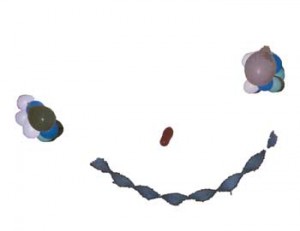 Perhaps hardwired by the tragi-comic reality of life and death, one sees epic-stylings everywhere, if one is honest—with war and scandal, love and adventure, supernatural forces and sometimes even a questionable birthright—all connected to the stellar and seemless narrative arch of the everyday. (In fact, they say this grand sweep of the epic can be seen even from space in the varietal paths of the Amazon River basin, in the moon-shaped crests of the Alps, and even, to generalize further, in the extended archipelago of Japan, Indonesia, and the Philippines.) But within the expansive historical scope of the epic it is always mystery that proves to have particular substance: if I could extend this metaphor further yet, it is mystery itself that builds a small cabin on the river after escaping death, hides there indefinitely, and then returns to its homeland to serve a false king until its true royal bloodline is revealed. Mystery is a fuel for poetic justice sometimes, and other times it is that narrow fissure that runs counter to prevailing norms and sets up subversion from within.
Perhaps hardwired by the tragi-comic reality of life and death, one sees epic-stylings everywhere, if one is honest—with war and scandal, love and adventure, supernatural forces and sometimes even a questionable birthright—all connected to the stellar and seemless narrative arch of the everyday. (In fact, they say this grand sweep of the epic can be seen even from space in the varietal paths of the Amazon River basin, in the moon-shaped crests of the Alps, and even, to generalize further, in the extended archipelago of Japan, Indonesia, and the Philippines.) But within the expansive historical scope of the epic it is always mystery that proves to have particular substance: if I could extend this metaphor further yet, it is mystery itself that builds a small cabin on the river after escaping death, hides there indefinitely, and then returns to its homeland to serve a false king until its true royal bloodline is revealed. Mystery is a fuel for poetic justice sometimes, and other times it is that narrow fissure that runs counter to prevailing norms and sets up subversion from within.
The particular and mysterious belongings of persons unknown provide for Maxwell Simmer an array of material to discover the underlying forms of narrative that connect to personal meaning. Taken from found photo albums, images are cut up and reconfigured to announce an absence of persons except for where they overlap with peripheral objects—objects which in turn act as witnesses to record presence in shadow, action through discolouration and wear, and sometimes ingenuity by virtue of their made-ness. In a kind of feedback loop, these objects are taken out of their original context and then used by themselves to re-create their original context, these objects thus re-legitimizing their importance as narrative cues all the more: for example, a string of balloons from a birthday party re-organized to form a smile. This heavy-handed insistence that form and content are inextricably linked becomes a farce of itself, even as it tries to make universalist claims about that link.
If Simmer’s compositions suggest a structural subversiveness between objects and their narrative parts, then Shiloh Sukkau’s text works rely on the underlying structure of the epic as a historically-grounded but embattled genre to be excavated and reiterated into noise. With texts appropriated from the back covers of science fiction and fantasy novels—novels famous for heroes and heroines, and for odyssey-like treatments of journey and redemption—Sukkau makes a place for sweeping statements against a geometric ground-zero, to suggest, amongst other things, an ironic attachment to art history, and perhaps to history in general. At the same time though, the earnestness of her crafty approach underlines a genuine commitment to principle it would seem, with the evidence of labour inflecting a desire to reconstruct and cherish myth—to suspend disbelief long enough to make a drawing or save the universe.
Maxwell Simmer is a 2007 Emily Carr graduate. His collage technique blends computer and handmade approaches in a way that betrays a double-mindedness: like Janus, Simmer likes to look in opposite directions simultaneously (a credit to his perceptive abilities). Currently he works on Granville Island replanting all the flower beds by the end of next week.
Shiloh Sukkau is also a 2007 Emily Carr graduate. Her grad piece is an elaborate, handmade stained-glass window in an odd geometric format (with heroic text) and can be viewed in the Charles H. Scott Gallery until May 21. She is tree planting for the summer, which is funny, because Maxwell is planting plants too (universalist).
